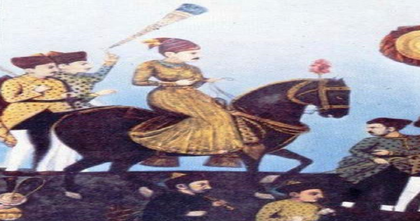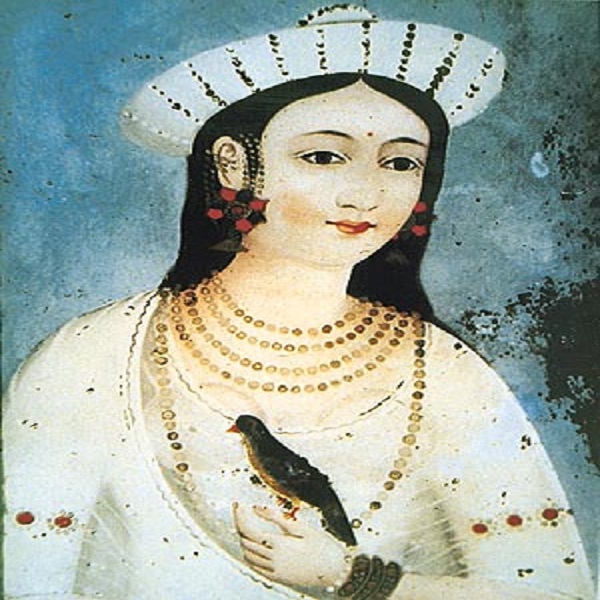- A1680
- B1689
- C1690
- D1700
Maratha Empire - Quiz
- APuna
- BHyderabad
- CSatara
- DNone
- ABalaji Vishwanath
- BBaji Rao I
- CBalaji Baji Rao
- DShamsher Bahadur
- ABajirao I
- BBiswanath
- CBajirao II
- DNone
- ABaji Rao I
- BBalaji Bajirao
- CShahuji
- DNone
- AAfgans
- BRaghunath Rao
- CMughal
- DNone
- AShivaji
- BAurangzeb
- CBajirao II
- DBalaji Vishwanath
- AThe Marathas emerged victorious
- BThe East India Company seized control of most of the Indian subcontinent
- CThe Maratha Empire expanded its territory
- DThe Marathas were able to abolish the Mughal throne and place Vishwas Rao on it in Delhi
- AThe Raja of Jaipur
- BThe Nizam of Hyderabad
- CThe Rajput kingdoms of Rajasthan
- DThe landlords of Bundelkhand
- AIsmail Beg
- BGhulam Kadir
- CShah Alam II
- DNone of the above
Results:
🟢 Correct Answers: 🔴 Wrong Answers:
🟢 Correct Answers: 🔴 Wrong Answers:
Login to save results
Quiz Information
Quiz Information
Quiz Platform FAQ
General Information
- Number of Questions: Each quiz consists of 10 questions.
- Time Limit: You have 30 seconds per question. The total time to complete the quiz is 5 minutes.
- Multiple Attempts: You can take the quiz multiple times to improve your score.
Results and Feedback
- Result Analysis: After completing the quiz, you will see a results page with the following details:
- Correct Option for each question.
- Your Selected Option for each question.
- Explanation for each answer to help you understand why it is correct or incorrect.
- Percentage of Correct Answers to show your overall performance.
- Interactive Features: The platform provides feedback on each attempt to help you learn and improve.
Important Instructions
- Do Not Refresh: Do not refresh the page while taking the quiz. Refreshing the page will end the current quiz and a new quiz will start.
- Saving Your Quiz: To save your quiz progress and questions, log in to your account. Once logged in, you can view saved quizzes in your profile section.
- Mandatory Selection: All questions are mandatory to select. If you do not select all 10 questions, you will not be able to submit the quiz. Once all questions are selected, you will be able to see the Submit button. If you wait until the end of the time, the quiz will be auto-submitted by the system, and you will be able to see your results.
Tips for Taking the Quiz
- Manage Your Time: Keep track of the time for each question to ensure you have enough time to answer all 10 questions.
- Review Explanations: After the quiz, read the explanations provided for each answer to enhance your understanding of the material.
- Retake the Quiz: If desired, take the quiz again to improve your score and reinforce your learning.
- Avoid Refreshing: To prevent losing progress, avoid refreshing the page during the quiz.
- Log In to Save: If you want to save your quiz progress, log in to your account and check your profile section for saved quizzes.
Quiz Analytics
Maratha Empire - Quiz
Guest User Time Taken:
Time Taken: Questions: Answered: Not Answered:
 Correct Answer:
Correct Answer:
 Wrong Answer:
Wrong Answer:
 Percentage: %
Percentage: %
- A. 1680
- B. 1689
- C. 1690
- D. 1700
Remarks:
Explanation:
After the death of Sambhaji, Rajaram was crowned at Raigad on 12 March 1689. As the Mughals started laying siege to the region around Raigad on 25 March 1689, the widow of Sambhaji, Maharani Yesubai and her minister Ramchandra Pant Amatya sent young Rajaram to the stronghold of Pratapgad through Kavlya ghat. The Maratha army fought with the Mughals and led the new Maratha king, Rajaram to escape through Kavlya ghat to the fort of Jinji in present-day state of Tamil Nadu via Pratapgad and Vishalgad forts, Rajaram reached Keladi in disguise and sought refuge from Keladi Chennamma - The brave queen fought the Mughals and ensured safe passage and escape of Rajaram to Jinji, Keladi Chennamma fought the jungle warfare which frustrated the Mughals and the Mughals proposed peace accord for the first time with an Indian ruler, Keladi Chennamma ensured safe travel of Rajaram to jingi by fighting the mughals where he reached after a month and a half long journey on 1 November 1689. Details of this escape are known from the incomplete poetical biography of Rajaram, the Rajaramacharita written by his Rajpurohit, Keshav Pandit, in Sanskrit.
- A. Puna
- B. Hyderabad
- C. Satara
- D. None
Remarks:
Explanation:
Rajaram occupied the fort at Jinji from 11 Nov. 1689, but left before it fell in 1698, setting up his court at fort Satara. During that period when Jinji remained unconquered, "the intrepid Maratha commanders, Santaji Ghorpade and Dhanaji Jadhav, wrought havoc in the Karnataka and Maharashtra by defeating the Mughal generals and cutting off their lines of communication."
- A. Balaji Vishwanath
- B. Baji Rao I
- C. Balaji Baji Rao
- D. Shamsher Bahadur
Remarks:
Explanation:
Baji Rao is credited with expanding the Maratha Empire, especially in North India, which contributed to its reaching a zenith during his son's reign twenty years after his death. In his military career spanning 20 years, Baji Rao never lost a battle. According to the British Army officer Bernard Montgomery, Baji Rao was possibly the finest cavalry general ever produced by India.
On November 12, 1736, the Peshwa started a march to the Mughal capital Delhi from Pune. On hearing about the advancing Maratha army, Mughal emperor asked Saadat Ali Khan I to march from Agra and check the Maratha advance. The Maratha chiefs Malhar Rao Holkar and Pilaji Jadhav crossed Yamuna and plundered the Mughal territories in the Ganga-Yamuna Doab. Saadat Khan led a force of 150,000 against them, and defeated them. He then retired to Mathura, thinking that the Marathas had retreated. However, Baji Rao advanced to Delhi and encamped at Talkatora. The Mughal emperor dispatched a force led by Mir Hasan Khan Koka to check his advance. The Marathas defeated this force in the Battle of Delhi on March 28, 1737. Baji Rao then retreated from Delhi, apprehensive about the approach of a larger Mughal force from Mathura.
- A. Bajirao I
- B. Biswanath
- C. Bajirao II
- D. None
Remarks:
Explanation:
Mastani was the second wife of Maratha Peshwa Bajirao I. She is said to have been a beautiful and brave woman, skilled in arts, literature, and warfare.
Mastani was born to Bundelkhand's Maharaja Chhatrasal of the Rajput clan. She was born in Mau Sahaniya, now a village in the Chhatarpur district of Madhya Pradesh. There is a Mastani Mahal in Dhubela where Mastani lived.
In April 1740, while Bajirao was inspecting his lands at Khargon, he suddenly became ill from fever and died. Bajirao's mortal remains were consigned to flames on April 28, 1740, at Raver Khedi on the banks of Narmada River.
Bajirao's mother and brother; Chimaji Appa put Mastani and her son in a prison cell. She tried to escape but the guards ganged up on her and knocked her unconscious. She stayed there for a few years. During this course of time she became weak, ill and eventually died, a sad, tragic painful death. After the death of Bajirao, Mastani died soon in 1740 and Kashibai took care of their son Shamsher Bahadur and made facilities to train him in weaponry.
Mastani's grave is in Pabal and is called Mastani's samadhi or mazaar
In the 2015 drama film Bajirao Mastani directed by Sanjay Leela Bhansali, Mastani was portrayed by Deepika Padukone.
- A. Baji Rao I
- B. Balaji Bajirao
- C. Shahuji
- D. None
Remarks:
Explanation:
Balaji Baji Rao (December 8, 1720-June 23, 1761), also known as Nana Saheb, was a Peshwa (prime minister) of the Maratha Empire in India.
During his tenure, the Chhatrapati (Maratha king) was reduced to a mere figurehead. At the same time, the Maratha empire started transforming into a confederacy, in which individual chiefs--such as the Holkars, the Scindias and the Bhonsles of Nagpur kingdom--became more powerful. During Balaji Rao's tenure, the Maratha territory reached its zenith. A large part of this expansion, however, was led by the individual chiefs, whose acts of plundering alienated the masses.
- A. Afgans
- B. Raghunath Rao
- C. Mughal
- D. None
Remarks:
Explanation:
During the Ganesh Festival of 1773 (the actual date was 30 August 1773, the last day of Ganesh Festival i.e. Anant Chaturdashi), several Gardi guards, led by their captain, Sumer Singh Gardi, entered the palace and started creating a commotion. They then charged towards the sleeping Peshwa's chambers, killing a clerk on the way. They intended to release Raghunathrao. Raghunathrao and his wife Anandibai, who were opposed to Narayanrao, had promised the Gardis that they would mediate in their dispute with Narayanrao. The Gardis followed Narayanrao to his uncle's chamber and a menial pulled him while Sumer Singh Gardi cut him down. His corpse was cremated secretly by the river at midnight.
According to popular legend, Raghunathrao had sent a message to Sumer Singh Gardi to fetch Narayanrao using the Marathi word dharaa (धरा) or 'hold' (actual phrase in Marathi - "Narayanrao-ana dhara"). This message was intercepted by his wife Anandibai who changed a single letter to make it read as maaraa or 'kill' . The miscommunication led the Gardis to chase Narayanrao, who, upon hearing them coming, started running towards his uncles' residence screaming, "Kaka! Mala Vachva!!" ("Uncle! Save me!"). But nobody came to help him and he was killed in the presence of his uncle. Rumour has it that Narayanrao's body was hacked into so many pieces that they had to carry the pieces in a pot, henceforth it was taken near the river and cremated at midnight. This act brought ill fame to the Peshwa administration, which was being looked after by the minister Nana Phadnavis. The Chief Justice of the administration, Ram Shastri Prabhune was asked to conduct an investigation into the incident, and Raghunathrao, Anandibai and Sumer Singh Gardi were all prosecuted in absentia. Although Raghunathrao was acquitted, Anandibai was declared an offender and Sumer Singh Gardi the culprit. Sumer Singh Gardi died mysteriously in Patna, Bihar in 1775, and Anandibai performed Hindu rituals to absolve her sins.
- A. Shivaji
- B. Aurangzeb
- C. Bajirao II
- D. Balaji Vishwanath
Remarks:
Explanation:
Shivaji and the Marathas are largely credited for ending Mughal control over the Indian subcontinent.
- A. The Marathas emerged victorious
- B. The East India Company seized control of most of the Indian subcontinent
- C. The Maratha Empire expanded its territory
- D. The Marathas were able to abolish the Mughal throne and place Vishwas Rao on it in Delhi
Remarks:
Explanation:
The outcome of the Second and Third Anglo-Maratha Wars was that the East India Company seized control of most of the Indian subcontinent, leading to the end of the Maratha Empire.
- A. The Raja of Jaipur
- B. The Nizam of Hyderabad
- C. The Rajput kingdoms of Rajasthan
- D. The landlords of Bundelkhand
Remarks:
Explanation:
The text states, "After the growth in power of feudal lords like Malwa sardars, landlords of Bundelkhand and Rajput kingdoms of Rajasthan, they refused to pay tribute to Mahadji, so he sent his army to conquer the states such as Bhopal, Datiya, Chanderi, Narwar, Salbai and Gohad."
- A. Ismail Beg
- B. Ghulam Kadir
- C. Shah Alam II
- D. None of the above
Remarks:
Explanation:
According to the paragraph, Mahadji Shinde intervened and killed Ghulam Kadir, who had deposed and blinded Shah Alam II, placing a puppet on the Delhi throne. Mahadji then restored Shah Alam II to the throne and acted as his protector.

